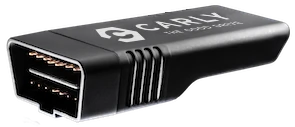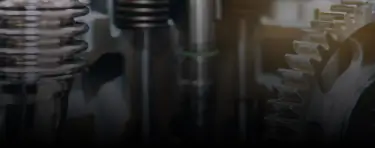P0430 Code Definition
Catalyst System Efficiency Below Threshold (Bank 2)
What Does the Engine Code P0430 Mean?
Character "P" in the first position of Diagnostic Trouble Code (DTC) represents the powertrain system (engine and transmission), "0" in the second position means that this is a generic OBD-II (OBD2) DTC. The "4" in the third character position in a DTC indicates that the Auxiliary emission controls system is experiencing a malfunction. The last two characters "30" are DTC numbers. OBD2 Diagnostic Trouble Code P0430 means that the sensor in the catalytic converter located in bank 2 has detected the catalytic converter’s efficiency below the threshold. A catalytic converter’s job is to burn up the remaining raw fuel after the combustion process and to eliminate or reduce harmful emissions. A catalyst efficiency monitor (CEM) uses two oxygen (O2) sensors, one placed in front (upstream) and the other one at the rear (downstream) of the catalytic converter. When these sensors work correctly, the front sensor’s readings typically fluctuate, while the back sensor’s readings remain steady. If both sensors have similar readings, it indicates that the catalytic converter is not working properly, the check engine light (CEL) also called malfunction indicator lamp (MIL) will turn on and the Powertrain Control Module (PCM) will store the P0430 trouble code.
Repair How To's for related faults
Carly's expert mechanics have identified the following related fault codes. With the information for these fault codes it is often possible to identify and better repair your faulty part/system:
Contents
Carly Universal Scanner

What Is the Cause of P0430?
While the most common causes of the P0430 code are a faulty catalytic converter and faulty O2 sensor, P0430 can also be caused by other issues:
A catalyst defect due to aging
Malfunctioning oxygen sensor (lambda sensor) circuits
A faulty front and/or rear lambda sensor
Damaged lambda sensor wiring
Leakage of mass airflow sensor
The fuel injector leaking too much fuel
A damaged exhaust manifold
A damaged exhaust pipe
An engine misfire
What Are the Symptoms of Code P0430?
Symptoms of a defective catalytic converter:
The engine control lamp (MIL) lights up (on some models the lamp starts to flash)
A poor throttle response
Poor fuel economy
Rough engine running
The failure of exhaust emission test
A strong exhaust odor from the exhaust pipe

How much does it cost to diagnose P0430?
Visiting a car repair shop and letting them perform a diagnostics check can cost you $60-$100. For almost the same price you can get Carly. Its advanced features can cover what a professional automotive scanner that costs over $3,000 would, and more!
Carly OBD2 ScannerWhich Tools Are Needed To Diagnose P0430?
To find out more about the P0430 code that is generated and stored in the Powertrain Control Module (PCM) of your car, the only tool you need is the Carly Universal OBD2 Scanner, which works for all car brands in the world with an OBD2 port. Carly is a revolutionary solution that allows you to access your car’s data with your phone and translates this information into powerful insights, predictions, and possibilities. This saves you trouble, time, and money.
How To Diagnose and Clear the Code P0430?
Performing a diagnostics check with a diagnostic scanner helps you identify a particular problem area that is outside the normal range and shows where a fault might be occurring. This helps you to detect errors before they cause more damage to your vehicle. In comparison to generic OBD devices that only provide OBD-level engine-related data, Carly can run advanced manufacturer-level diagnostics, check all your ECUs in your car (like ABS, airbag, multimedia) and get deeper insights. You can find additional information about the trouble code and understand the severity of the problem. With the new Smart Mechanic feature, you get additional professional insights and tips from expert mechanics. You are able to check components and their mechanics, find detailed repair tips, and learn about potential future damage. After you have fixed the problem you can easily clear the fault codes with Carly, too. Also, the diagnostic results are safely stored inside the app or as convenient PDF reports you can share with your friends or a mechanic.
Common Mistakes When Diagnosing the P0430 Code
The most common mistake is to look and try to fix each individual OBD2 code without having a holistic approach. Understanding the interrelationship of OBD-II (OBD2) systems and catalytic converter functions is crucial to determining the root cause of the problem and finding the right solution. For example, the normal operating temperatures for catalytic converters range between 400°C (750°F) and 870°C (1,600°F ). If an ignition system continually misfires, the temperatures within the catalytic converter can increase to more than 1,370°C (2,500°F), thus destroying the catalytic converter. In this case, replacing the catalytic converter won't solve the problem. Also, other factors such as the use of leaded fuel or excessive engine oil burning can affect the condition of the catalytic converter. The presence of any other OBD-II (OBD2) code may help to determine the real problem.
How Serious Is Code P0430?
While P0430 issues are not endangering the safety systems of the vehicle, they could seriously damage the catalytic converter. To avoid the high costs of catalytic converters replacement, it is recommended to solve the problem as soon as possible.
How to Fix Code P0430
The only thing you can do yourself, in this case, is to check whether the exhaust is tight. To do this, bring the vehicle up to revolutions while stationary and check whether a "bubbling" sound can be heard from the exhaust system. If this is the case, the exhaust must be repaired and the fault should be reassessed.
For all other tests, a specialist workshop should be consulted, as a so-called exhaust gas tester is required. This can be used to check at the tailpipe whether the catalytic converter is still working properly or it is not. In addition, it can also be checked whether the lambda sensors are putting out the correct values to the engine control unit. If it is determined that the catalytic converter is no longer working properly (due to normal aging), the catalytic converter must be replaced.

Estimated Cost of Repair for the P0430 Code
The average cost of repairing a catalytic converter can range from $1,000 to $2,500. A catalytic converter replacement starts around $2,000, O2 sensor replacement can cost $150 to $500.
Learn More about Code P0430
What Is a Catalytic Converter?
A catalytic converter, also called "cat", is an exhaust emission control device with two pipes: one ("input") connecting converter to the engine and another one ("output") connecting converter to the exhaust. A catalytic converter plays a major role in the reduction of pollutant gases.
What Is a Catalyst?
A catalyst is a substance that increases the rate of a chemical reaction. It is important to know this substance remains unchanged during and after the catalysis process.
What Does a Catalytic Converter Do?
The catalytic converter is using a chemical reaction to convert toxic hydrocarbons, carbon monoxide, and nitrous oxides emitted by the internal combustion engine into harmless gases. The main emission control technology for spark-ignition engines (gasoline, natural gas, and Liquified Petroleum Gas (LPG)) is Three-Way Catalysts (TWC) whereas a key technology for compression-ignition engines (diesel) remains Diesel Oxidation Catalysts (DOC). A catalytic converter consists of a steel housing. A metallic (metalith) or ceramic (monolith) carrier is installed in this housing. The catalyst consists of small channels running through it in the longitudinal direction. The aim is to create as large a surface area as possible so that the catalyst has an optimum effect. The carrier surface is coated with a highly porous layer (wash-coat). Precious metals (platinum, palladium, and/or rhodium) are incorporated into this.
Catalytic Converter Price
Depending on the model, the price of a catalytic converter itself can range from $100 to $4,000. The price of a catalytic converter very much depends on the converter type — direct-fit vs. universal-fit. Direct-fit converters are designed to precisely match the OEM part and are more expensive than universal-fit converters. Because a direct-fit catalytic converter replacement doesn’t require using professional-level tools,this is the best choice for DIYers. Universal-fit converters can be a more cost-efficient choice, however, fitting a universal converter into a vehicle can be difficult and may require hiring a professional mechanic.
What Is a Catalytic Converter Cleaner, and How Does It Work?
The catalytic converter cleaner is an additive that dissolves in fuel and removes carbon there. While cleaners reduce carbon deposits in a catalytic converter, they won't repair a damaged catalytic converter.
*Every car is unique. The Carly Features that your car supports depend on the model, build year, hardware, and software in the car. Plug the scanner in the OBD2 port, connect to the app, run your first diagnostics, and check which features are available for your car. Also, keep in mind that any information provided on this website is for informational purposes only and should be used at your own risk. Mycarly.com is not responsible for any errors or omissions, or for the results stemming from the use of this information.


